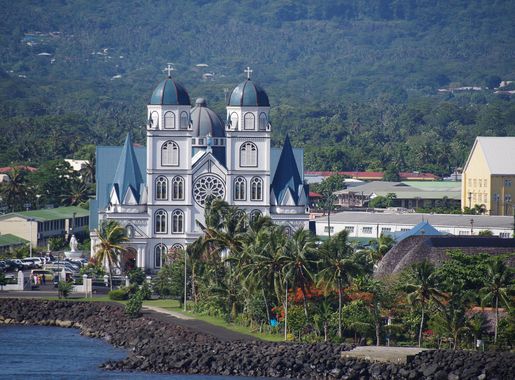
Charming Coastal Paradise: Apia Waterfront
Discover the vibrant heart of Samoa at Apia Waterfront, where natural beauty meets rich cultural heritage along the stunning northern coast of Upolu Island.
Nestled on the northern coast of Upolu Island, the Apia Waterfront is the heart and soul of Samoa's capital city. This scenic area is a vibrant blend of natural beauty and cultural heritage, making it a must-visit destination for any traveler. The sparkling blue waters of the Pacific Ocean lap gently against the shoreline, where visitors can enjoy leisurely strolls along the palm-fringed promenade. The Apia Waterfront is not just about stunning views; it is also the cultural hub of the city. Here, you can explore a variety of local markets brimming with fresh produce, handmade crafts, and traditional Samoan foods. The bustling Fish Market offers a glimpse into the daily lives of the locals and is a great place to sample some of the freshest seafood you'll ever taste. For history enthusiasts, the waterfront is home to several important landmarks, including the Robert Louis Stevenson Museum. This museum, dedicated to the famous Scottish author who spent his final years in Samoa, offers fascinating insights into his life and the local culture during his time. Another notable spot is the Immaculate Conception of Mary Cathedral, a stunning piece of architecture that stands as a testament to the island's rich religious heritage. Whether you're looking to relax by the ocean, immerse yourself in local culture, or delve into the history of Samoa, the Apia Waterfront offers a little something for everyone. Its welcoming atmosphere and diverse attractions make it an unforgettable stop on your Samoan adventure.
Local tips in Apia Waterfront
- Visit the Fish Market early in the morning to experience the local hustle and bustle and get the freshest seafood.
- Wear comfortable walking shoes as the best way to explore the waterfront is on foot.
- Bring cash for the local markets, as some vendors might not accept cards.
- Don't miss the sunset views from the waterfront promenade; they are truly spectacular.
- Check the opening hours of the Robert Louis Stevenson Museum ahead of your visit to plan your day efficiently.
Charming Coastal Paradise: Apia Waterfront
Nestled on the northern coast of Upolu Island, the Apia Waterfront is the heart and soul of Samoa's capital city. This scenic area is a vibrant blend of natural beauty and cultural heritage, making it a must-visit destination for any traveler. The sparkling blue waters of the Pacific Ocean lap gently against the shoreline, where visitors can enjoy leisurely strolls along the palm-fringed promenade. The Apia Waterfront is not just about stunning views; it is also the cultural hub of the city. Here, you can explore a variety of local markets brimming with fresh produce, handmade crafts, and traditional Samoan foods. The bustling Fish Market offers a glimpse into the daily lives of the locals and is a great place to sample some of the freshest seafood you'll ever taste. For history enthusiasts, the waterfront is home to several important landmarks, including the Robert Louis Stevenson Museum. This museum, dedicated to the famous Scottish author who spent his final years in Samoa, offers fascinating insights into his life and the local culture during his time. Another notable spot is the Immaculate Conception of Mary Cathedral, a stunning piece of architecture that stands as a testament to the island's rich religious heritage. Whether you're looking to relax by the ocean, immerse yourself in local culture, or delve into the history of Samoa, the Apia Waterfront offers a little something for everyone. Its welcoming atmosphere and diverse attractions make it an unforgettable stop on your Samoan adventure.
When is the best time to go to Apia Waterfront?
Iconic landmarks you can’t miss
To-Sua Ocean Trench
Discover the breathtaking To-Sua Ocean Trench in Samoa, where lush landscapes meet crystal-clear waters in a serene setting perfect for relaxation.
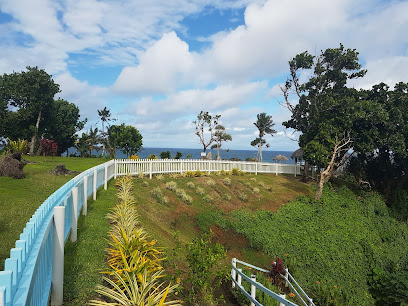
Piula Cave Pool
Experience the natural beauty of Piula Cave Pool, a hidden gem in Samoa's Faleapuna, perfect for swimming and relaxation in stunning surroundings.
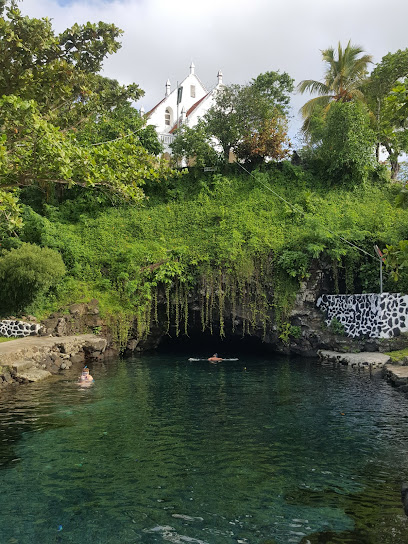
Sheraton Samoa Aggie Grey's Hotel & Bungalows
Discover the luxurious Sheraton Samoa Aggie Grey's Hotel & Bungalows, where modern comfort meets the enchanting beauty of Samoa's culture and landscape.

Samoa Cultural Village
Explore the vibrant heritage of Samoa through interactive experiences and traditional performances at the Samoa Cultural Village, a must-visit attraction.
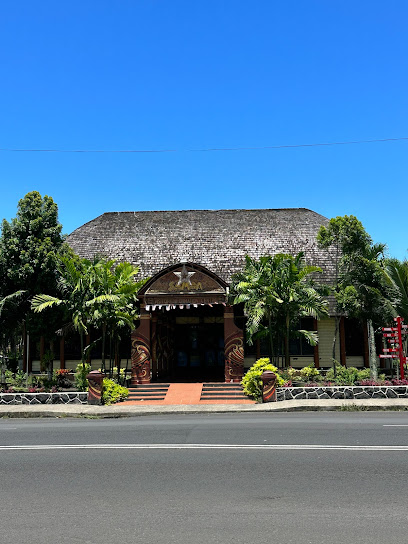
Palolo Deep Marine Reserve
Explore the vibrant underwater ecosystem of Palolo Deep Marine Reserve in Apia, Samoa, a paradise for snorkeling and diving enthusiasts.

Robert Louis Stevenson Museum
Discover the enchanting world of Robert Louis Stevenson at his museum in Apia, where literature and history come alive amidst stunning natural beauty.
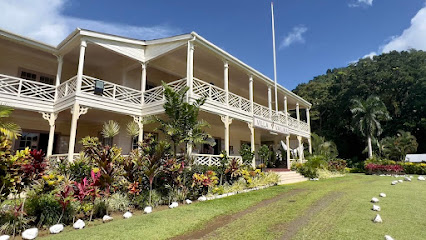
Papaseea Sliding Rocks
Unleash your adventurous spirit at Papaseea Sliding Rocks, Samoa's captivating natural water slides surrounded by stunning tropical scenery.
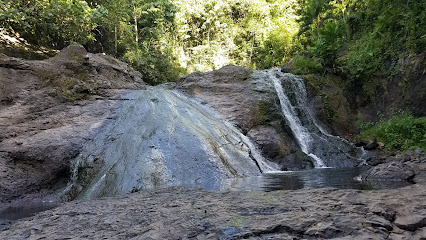
The Edge Marina, Samoa
Experience breathtaking ocean views and vibrant local flavors at The Edge Marina, a premier pub and café in the heart of Apia, Samoa.

Immaculate Conception Cathedral
Explore the breathtaking Immaculate Conception Cathedral in Apia, a stunning blend of Samoan architecture and rich spiritual heritage.
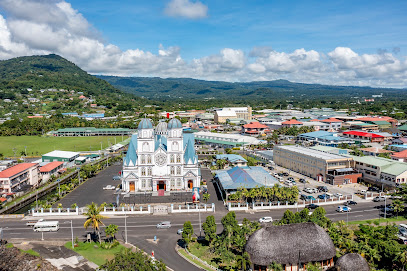
The White House Hotel - Apia Samoa
Discover the perfect blend of comfort and convenience at The White House Hotel in Apia, Samoa, your gateway to the island's beauty and culture.
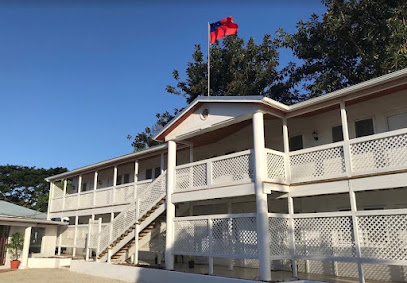
Papapapaitai Falls
Experience the awe-inspiring beauty of Papapapaitai Falls, Samoa's stunning natural treasure, perfect for adventure and relaxation.
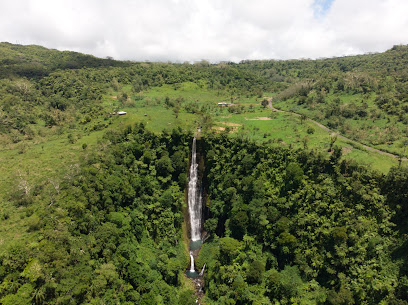
Togitogiga Waterfall
Discover the beauty of Togitogiga Waterfall in Samoa, a serene oasis perfect for swimming, relaxation, and nature photography amidst lush tropical landscapes.
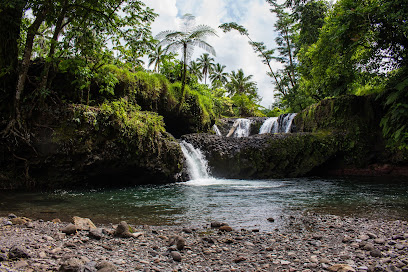
Museum of Samoa
Discover the rich heritage and vibrant culture of Samoa at the Museum of Samoa, a must-visit destination for every traveler.
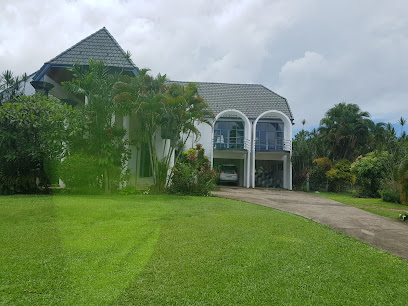
Vaiala Beach Cottages
Discover the beauty of Samoa at Vaiala Beach Cottages, where relaxation meets adventure along the stunning shoreline.

Mt Vaea
Experience the breathtaking views and lush landscapes at Mt Vaea, a must-visit mountain peak in Samoa for nature lovers and adventure seekers.
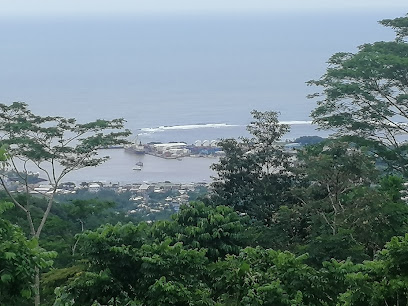
Unmissable attractions to see
Palolo Deep Marine Reserve
Explore the stunning Palolo Deep Marine Reserve in Samoa, a vibrant underwater paradise perfect for snorkeling, diving, and experiencing marine biodiversity.
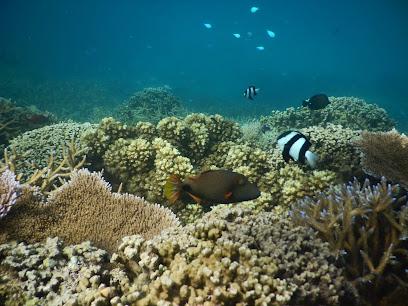
Giant Clam Sanctuary
Explore the breathtaking Giant Clam Sanctuary in Savaia, a pristine marine reserve teeming with vibrant life and stunning underwater vistas for an unforgettable experience.
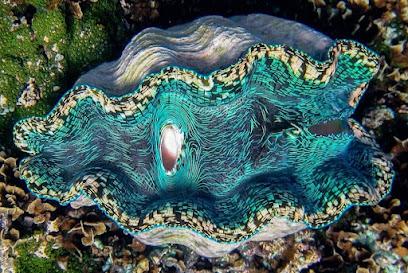
Essential places to dine
Paddles Restaurant
Discover the rich flavors of Samoa at Paddles Restaurant in Apia—where fresh seafood meets vibrant culture in an unforgettable dining experience.
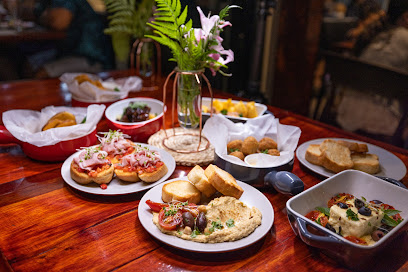
Giordano's Pizzeria // Samoa
Discover the authentic taste of Italy at Giordano's Pizzeria in Samoa – where every slice tells a story.
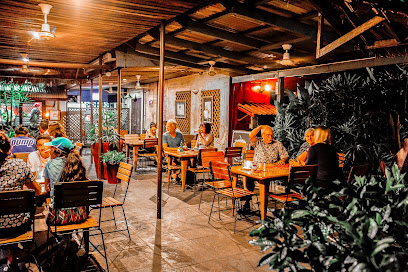
Sinalei Reef Resort & Spa
Experience paradise at Sinalei Reef Resort & Spa - where luxury meets nature in stunning Samoa.

Amanaki Hotel
Discover the vibrant flavors of Samoa at Amanaki Hotel in Apia – where culinary excellence meets authentic hospitality.

The Edge Marina, Samoa
Experience breathtaking ocean views and delightful cuisine at The Edge Marina in Samoa – your perfect seaside escape.
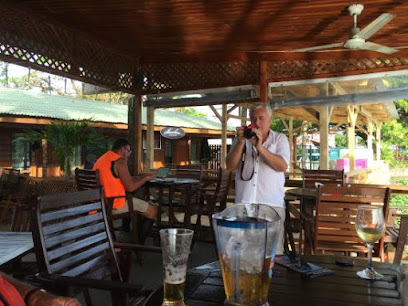
Scalini's Restaurant
Discover authentic Samoan cuisine at Scalini's Restaurant in Apia - where local flavors meet culinary artistry.
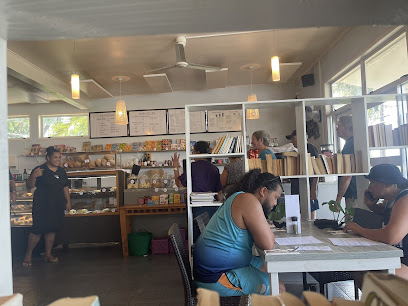
Tifaimoana Indian Restaurant
Discover authentic Indian cuisine at Tifaimoana Indian Restaurant in Apia, Samoa—a perfect blend of spice and hospitality.
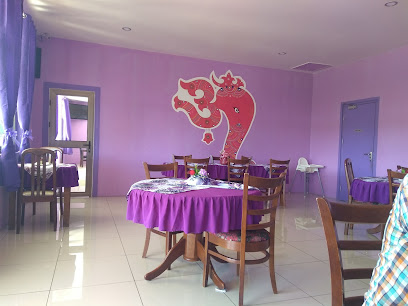
Sails Restaurant & Bar
Experience exquisite dining at Sails Restaurant & Bar in Apia, where local flavors meet stunning ocean views.
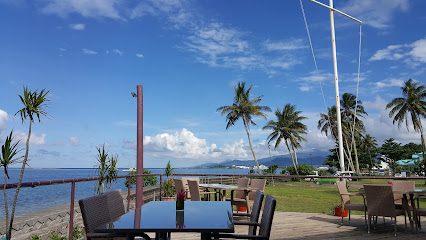
Pinati Restaurant
Savor the essence of Samoa at Pinati Restaurant - where authentic flavors meet vibrant culture in every bite.
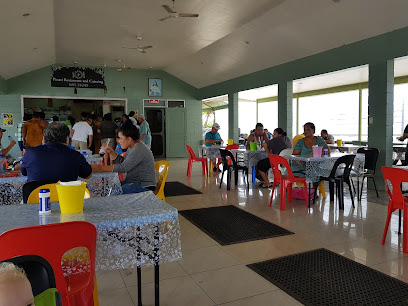
Kokobanana Bar & Grill
Discover the vibrant flavors of Samoa at Kokobanana Bar & Grill - where traditional meets modern in a lively atmosphere.
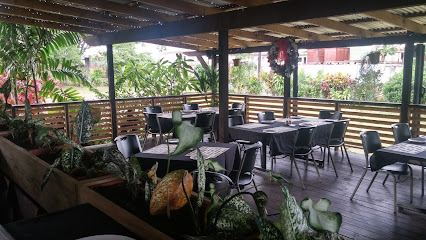
Bistro Tatau Restaurant
Experience authentic Samoan cuisine at Bistro Tatau in Apia – where local flavors meet modern culinary artistry.
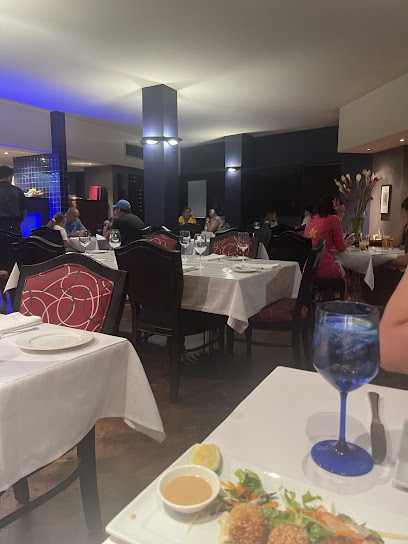
Amanaki Restaurant
Experience authentic Samoan flavors at Amanaki Restaurant in Apia - where every meal is a celebration of local culture.
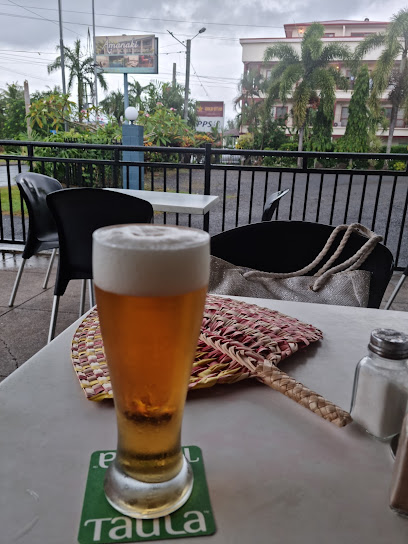
Island Grill - Steak & Seafood
Experience exquisite steak and seafood dishes at Island Grill in Apia, where every meal is crafted from fresh local ingredients.
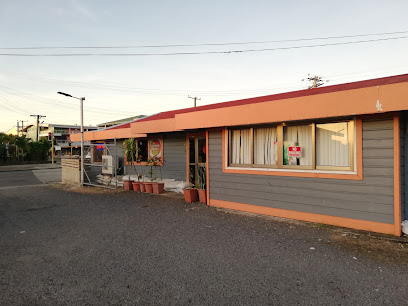
Seafood Gourmet
Discover Seafood Gourmet: A Culinary Haven in Apia Offering Fresh Local Seafood Dishes with Stunning Harbor Views.
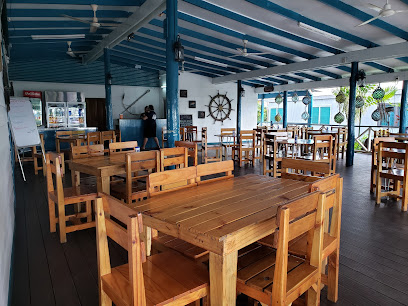
Roko's Restaurant
Discover the rich flavors of Samoa at Roko's Restaurant - a must-visit dining destination in Apia offering authentic local cuisine.
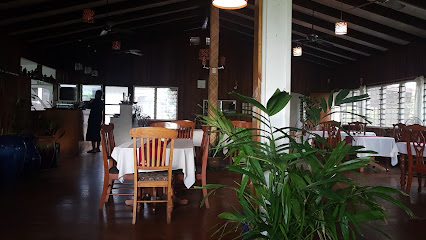
Markets, malls and hidden boutiques
Taumeasina Island Resort
Experience luxury and tranquility at Taumeasina Island Resort, Samoa's premier destination for relaxation and adventure.

Tanoa Tusitala Hotel
Explore the beauty of Samoa while enjoying luxury and comfort at Tanoa Tusitala Hotel, your gateway to unforgettable island adventures.

Palolo Deep Marine Reserve
Explore the vibrant underwater world of Palolo Deep Marine Reserve, an aquatic paradise near Apia, Samoa, perfect for snorkeling and diving enthusiasts.
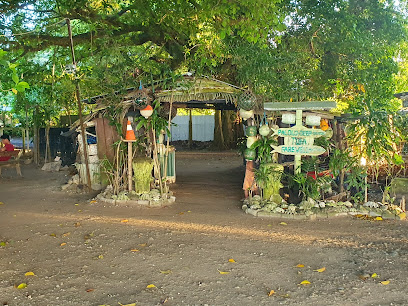
Samoa Cultural Village
Discover the essence of Samoa through culture, cuisine, and community at the Samoa Cultural Village in Apia.
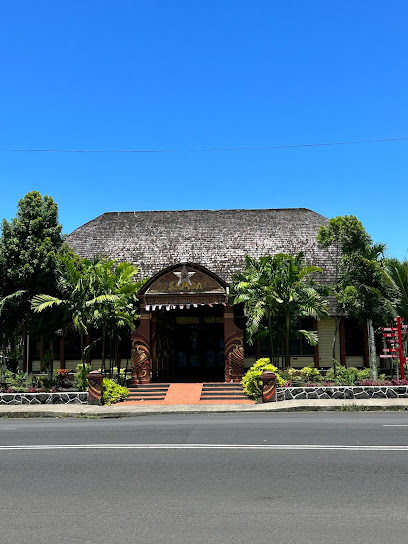
Pacific Jewell Gift Shop & Garden Café
Explore unique Samoan crafts and indulge in delightful refreshments at Pacific Jewell Gift Shop & Garden Café in Apia.
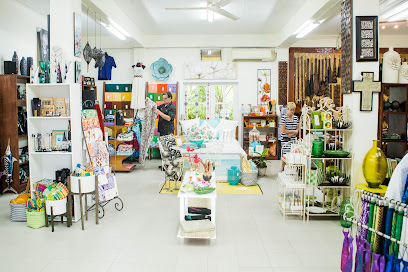
The White House Hotel - Apia Samoa
Experience comfort and local charm at The White House Hotel in Apia, Samoa, a perfect base for exploring the island's vibrant culture.
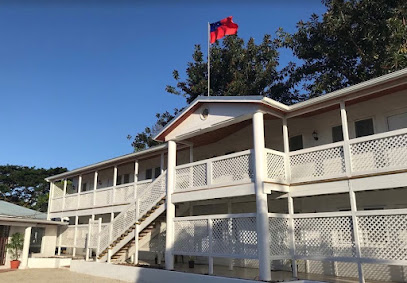
Lava Hotel Apia
Experience the charm of Samoa at Lava Hotel Apia, your cozy retreat in the heart of Apia, blending comfort with cultural exploration.
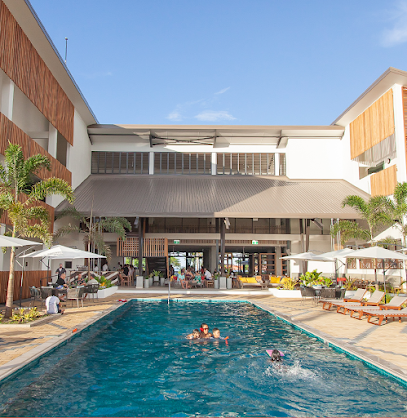
Eveni Carruthers
Explore Eveni Carruthers in Apia for an unforgettable shopping experience filled with local fashion, gifts, and unique treasures.
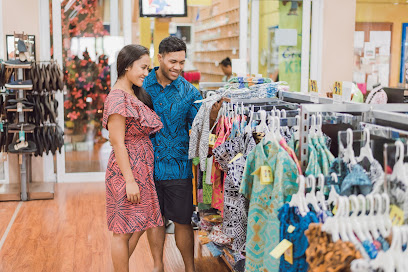
Tiapapata Art Centre
Explore the vibrant cultural expressions of Samoa at Tiapapata Art Centre, an art gallery showcasing local artistry and tradition.
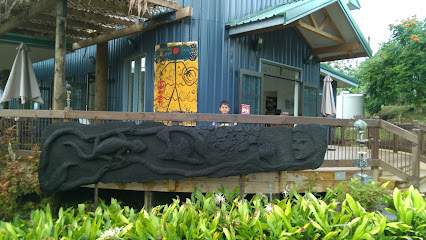
Janet's Samoa
Explore Janet's Samoa for unique, handcrafted gifts and immerse yourself in the vibrant Samoan culture while visiting Apia.
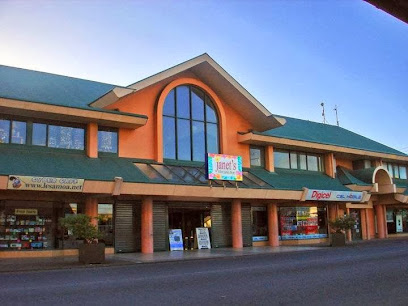
Vaiala Beach Cottages
Experience the serene beauty of Vaiala Beach Cottages, your perfect getaway near the stunning shores of Apia, Samoa.

Linettacollections Samoa
Explore the beauty of Samoan craftsmanship at Linettacollections Samoa, where unique home goods and local artistry await your discovery.

Le Well
Explore Le Well in Apia for unique home goods, local crafts, and authentic Samoan souvenirs to cherish for years to come.
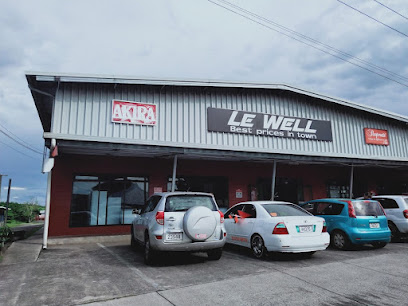
Urban Village Tattoos Samoa
Experience the artistry of Urban Village Tattoos in Samoa, where every ink tells a unique story of culture and personal expression.
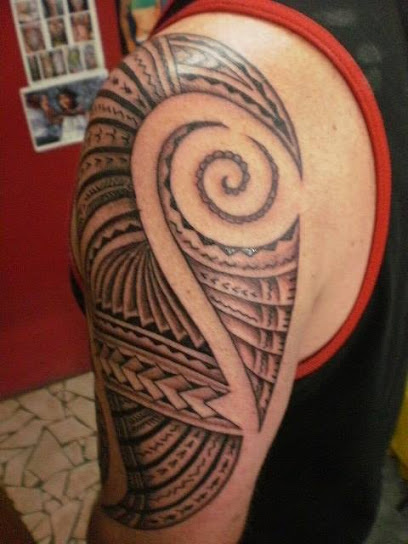
Horizon Surf Samoa
Explore the vibrant surf culture at Horizon Surf Samoa, your one-stop shop for surf gear and apparel in the heart of Apia.
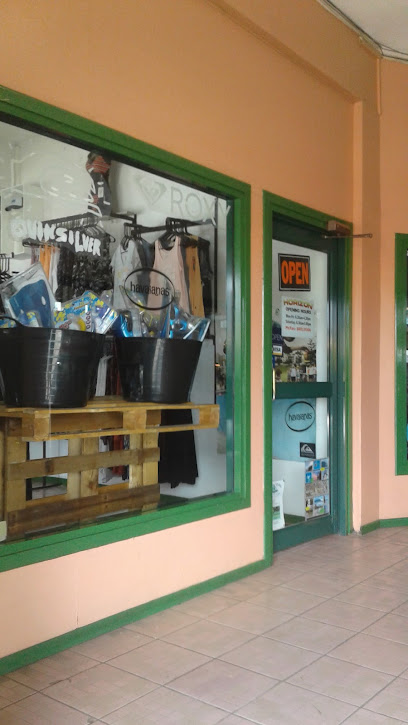
Essential bars & hidden hideouts
Paddles Restaurant
Experience authentic Samoan cuisine at Paddles Restaurant in Apia, a perfect blend of tradition and taste with stunning views.

The Edge Marina, Samoa
Discover a tropical oasis at The Edge Marina, Samoa's premier pub, café, and cocktail bar, offering stunning waterfront views and delicious cuisine.
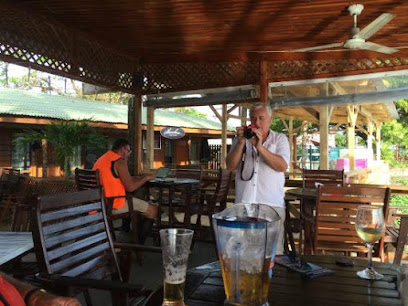
Sails Restaurant & Bar
Experience the authentic flavors of Samoa at Sails Restaurant & Bar, where stunning ocean views meet delightful local cuisine.
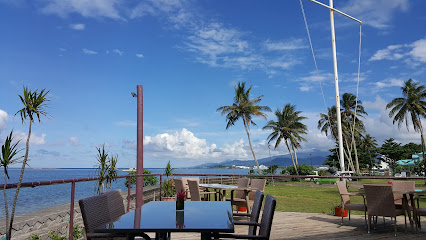
Kokobanana Bar & Grill
Experience the vibrant flavors of Samoa at Kokobanana Bar & Grill, where local ingredients meet international cuisine in a lively atmosphere.

Island Grill - Steak & Seafood
Experience the best of Samoan cuisine at Island Grill, where fresh seafood and prime steaks meet warm Pacific hospitality in Apia.
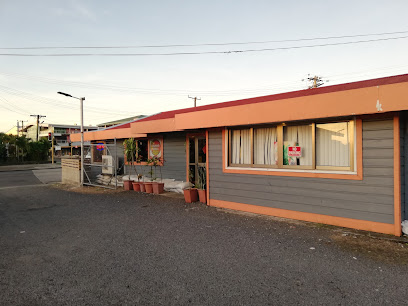
Taumeasina Hidden Gem Restaurant & Bar
Experience the best of Samoan flavors at Taumeasina Hidden Gem Restaurant & Bar, where culinary delights meet stunning ocean views.
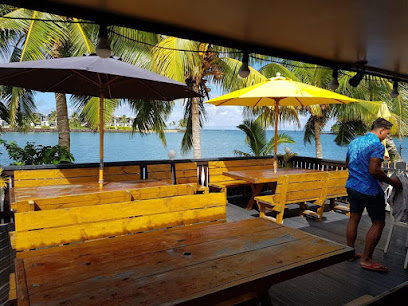
Taumeasina Restaurant & Bar
Experience the flavors of Samoa at Taumeasina Restaurant & Bar with stunning waterfront views and a delightful menu of local and international dishes.
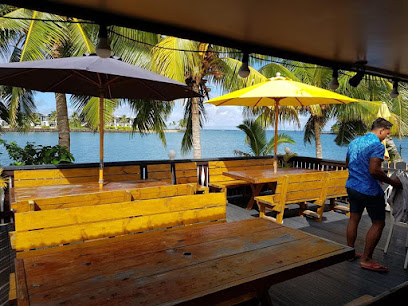
RSA Night Club
Discover the pulsating nightlife of Apia at RSA Night Club, where music, dancing, and unforgettable memories await every visitor.
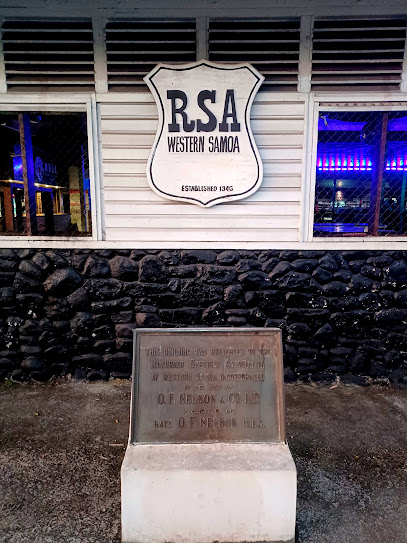
Cocktails On the Rocks
Experience the vibrant nightlife at Cocktails On the Rocks, Apia's top bar for refreshing drinks and breathtaking views.
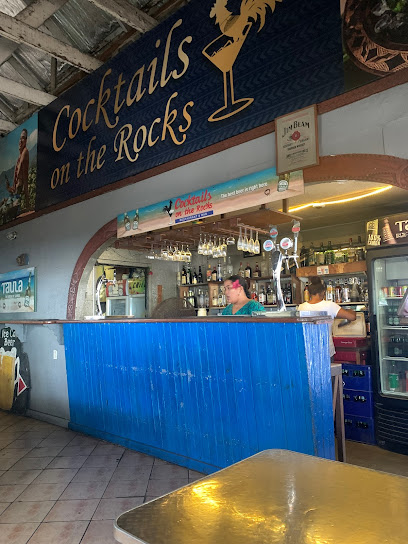
Apia Yacht Club Bar and Restaurant
Discover the flavors of Samoa at the Apia Yacht Club Bar and Restaurant, where local cuisine meets stunning waterfront views.
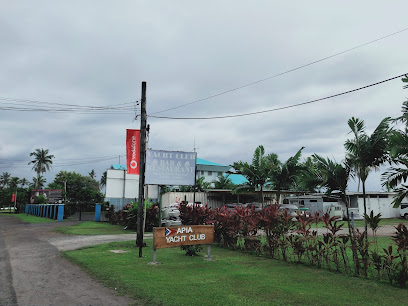
JP Bar
Discover the lively atmosphere and refreshing drinks at JP Bar in Apia, the perfect place to unwind and connect with locals.
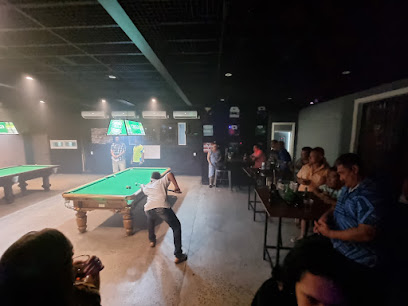
Aggie Grey's
Experience the essence of Samoan cuisine at Aggie Grey's, a culinary icon in Apia offering authentic flavors and cultural ambiance.

Y-Not Lounge Bar Samoa
Discover the vibrant nightlife at Y-Not Lounge Bar in Apia, Samoa, where tropical drinks and lively ambiance await.

Beachcomber Bar And Restaurant
Experience the flavors of Samoa at Beachcomber Bar And Restaurant, where stunning ocean views meet delicious local cuisine in a relaxed atmosphere.
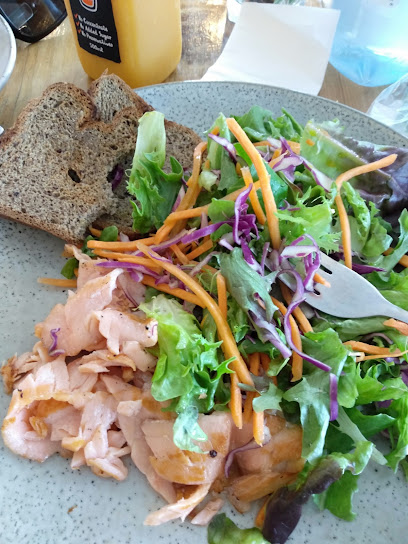
CLUB 75 Samoa
Discover the pulse of Apia's nightlife at CLUB 75 Samoa, where vibrant music, friendly service, and unforgettable moments await you.
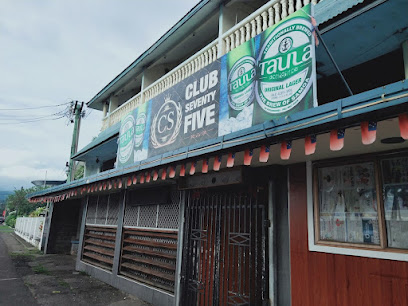
Local Phrases about Apia Waterfront
-
- HelloTalofa
[Tah-loh-fah] - GoodbyeFa
[Fah] - YesIoe
[Ee-oh-eh] - NoLeai
[Leh-ai] - Please/You're welcomeFa'amalie
[Fah-ah-mah-lee-eh] - Thank youFa'afetai
[Fah-ah-feh-tie] - Excuse me/SorryFa'amalie
[Fah-ah-mah-lee-eh] - How are you?O a mai oe?
[Oh-ah-mah-ee-oh-eh] - Fine. And you?Lelei. O a oe?
[Leh-leh-ee. Oh-ah-eh] - Do you speak English?Ou te lea fa'ainglisi?
[Oh-teh-leh-ah-fah-ah-eeng-lee-see] - I don't understandE le mafai ona ou te malamalama
[Eh-leh-mah-fie-oh-nah-oh-teh-mah-lah-mah-lah-mah]
- HelloTalofa
-
- I'd like to see the menu, pleaseOu te fia vaega i le su'esu'e, fa'amalie
[Oh-teh-fee-ah-vah-eh-gah-ee-leh-soo-eh-soo-eh-fah-ah-mah-lee-eh] - I don't eat meatE le ouai mea'ai
[Eh-leh-oh-oo-eye-meh-ah-ah-ee] - Cheers!Manuia
[Mah-noo-ee-ah] - I would like to pay, pleaseOu te fia totogi, fa'amalie
[Oh-teh-fee-ah-toh-toh-gee-fah-ah-mah-lee-eh]
- I'd like to see the menu, pleaseOu te fia vaega i le su'esu'e, fa'amalie
-
- Help!Tulou!
[Too-loh-oo] - Go away!A'oga
[Ah-oh-ngah] - Call the Police!Fa'afemau le Fa'amasinoga!
[Fah-ah-feh-mow-leh-fah-ah-mah-see-noh-ngah] - Call a doctor!Fa'afemau le foma'i!
[Fah-ah-feh-mow-leh-foh-mah-ee] - I'm lostUa ou luti
[Oo-ah-oh-loo-tee] - I'm illUa ou mativa
[Oo-ah-oh-mah-tee-vah]
- Help!Tulou!
-
- I'd like to buy...Ou te fia fa'atau...
[Oh-teh-fee-ah-fah-ah-tah-oo] - I'm just lookingOu te taumafai
[Oh-teh-tah-oo-mah-fie] - How much is it?E fia tele le totogi?
[Eh-fee-ah-teh-leh-toh-toh-gee] - That's too expensiveO lelei tele le totogi
[Oh-leh-leh-ee-teh-leh-toh-toh-gee] - Can you lower the price?Ou te fia fa'atase le totogi?
[Oh-teh-fee-ah-fah-ah-tah-seh-leh-toh-toh-gee]
- I'd like to buy...Ou te fia fa'atau...
-
- What time is it?O le a le taimi?
[Oh-leh-ah-leh-tie-mee] - It's one o'clockUa le tasi
[Oo-ah-leh-tah-see] - Half past (10)I le itu e sefulu
[Ee-leh-ee-tooh-eh-seh-foo-loo] - MorningTaeao
[Tah-eh-ah-oh] - AfternoonAfiafi
[Ah-fee-ah-fee] - EveningIli
[Ee-lee] - YesterdayAnanafi
[Ah-nah-nah-fee] - TodayAso nei
[Ah-soh-nay-ee] - TomorrowAso o le a
[Ah-soh-oh-leh-ah] - 1Tasi
[Tah-see] - 2Lua
[Loo-ah] - 3Tolu
[Toh-loo] - 4Fa
[Fah] - 5Lima
[Lee-mah] - 6Ono
[Oh-noh] - 7Fitu
[Fee-too] - 8Valu
[Vah-loo] - 9Iva
[Ee-vah] - 10Sefulu
[Seh-foo-loo]
- What time is it?O le a le taimi?
-
- Where's a/the...?O fea le...?
[Oh-feh-ah-leh] - What's the address?O le a le fa'atonu?
[Oh-leh-ah-leh-fah-ah-toh-noo] - Can you show me (on the map)?Ou te fa'ailoa mai (i le mapa)?
[Oh-teh-fah-ah-ee-loh-ah-mai-ee-leh-mah-pah] - When's the next (bus)?O le a le afea (ta'avale)?
[Oh-leh-ah-leh-ah-feh-ah-tah-ah-vah-leh] - A ticket (to ....)Tiketi (i le ....)
[Tee-keh-tee-ee-leh]
- Where's a/the...?O fea le...?
History of Apia Waterfront
-
The Apia Waterfront has been central to the Samoan way of life for centuries. The indigenous Samoans, known as the Polynesians, first settled the area over 3,000 years ago. The waterfront served as a hub for fishing, social gatherings, and traditional ceremonies. The local culture, rich in oral traditions, song, and dance, thrived along the shores of Apia, laying the foundation for a community deeply connected to the sea.
-
In the 19th century, the Apia Waterfront became a focal point of interest for European explorers, traders, and missionaries. The arrival of John Williams of the London Missionary Society in 1830 marked a significant turning point. European settlers and missionaries established churches and schools, bringing Christianity and Western education to the Samoan people. This period saw a blend of indigenous customs with new religious practices, forever altering the cultural landscape of the waterfront.
-
From 1899 to 1914, Samoa was a German colony, and Apia served as its administrative center. The Apia Waterfront witnessed substantial infrastructural development during this period. German influence is still evident in some of the colonial architecture that dots the waterfront. The period also saw economic growth, with the establishment of copra plantations and other trade activities. The German colonial era left a lasting imprint on Apia's urban and cultural development.
-
The early 20th century saw the rise of the Mau movement, a non-violent resistance campaign against colonial rule, which had profound implications for the Apia Waterfront. On December 28, 1929, known as 'Black Saturday,' a peaceful demonstration in Apia turned violent when New Zealand authorities opened fire on unarmed Samoan protesters. This tragic event is commemorated annually and marked a pivotal moment in Samoa's struggle for independence, which was eventually achieved in 1962.
-
In 1991, Cyclone Val struck Samoa, causing extensive damage to the Apia Waterfront. The cyclone was one of the most devastating natural disasters in the nation's history, leading to significant loss of life and property. In the aftermath, the Samoan government and international aid organizations undertook extensive reconstruction efforts. Modern Apia Waterfront, with its blend of traditional and contemporary architecture, stands as a testament to the resilience and spirit of the Samoan people.
-
In recent decades, the Apia Waterfront has experienced a cultural renaissance. Efforts to preserve and celebrate Samoan heritage are evident in the numerous cultural events, festivals, and performances held along the waterfront. The establishment of the Samoa Cultural Village and the annual Teuila Festival have made the area a vibrant tourist destination. Visitors can experience traditional Samoan crafts, dances, and cuisine, further enriching the cultural tapestry of the Apia Waterfront.
Apia Waterfront Essentials
-
Apia, the capital of Samoa, is accessible via Faleolo International Airport (APW), located approximately 40 kilometers west of the city center. Direct flights are available from New Zealand, Australia, Fiji, and American Samoa. Taxis and shuttle buses are available from the airport to the Apia Waterfront. Car rental services are also available at the airport for those who prefer to drive themselves.
-
Getting around Apia Waterfront can be done via taxis, which are readily available and relatively affordable. Public buses are another option, offering a more economical way to travel, though they can be less predictable in terms of schedule. For a more leisurely experience, consider walking or renting a bicycle to explore the waterfront area at your own pace.
-
The official currency of Samoa is the Samoan Tala (WST). Credit and debit cards are widely accepted in hotels, restaurants, and larger shops, but it is advisable to carry some cash for smaller establishments and local markets. ATMs are available throughout Apia, including along the waterfront, but it's always a good idea to have some local currency on hand.
-
Apia Waterfront is generally safe for tourists, but it is important to take standard precautions. Avoid walking alone at night in less populated areas and keep an eye on your belongings in crowded places. While crime rates are relatively low, petty theft can occur. Areas like Savalalo Market and Fugalei Market are bustling and should be navigated with care.
-
In case of emergency, dial 911 for immediate assistance. The main hospital in Apia is the Tupua Tamasese Meaole Hospital, which provides comprehensive medical services. Pharmacies are also available for minor health issues. It is highly recommended to have travel insurance that covers medical emergencies and other unexpected situations.
-
Fashion: Do dress modestly, especially when visiting religious sites. Avoid wearing revealing clothing. Religion: Do respect local customs and traditions, and always remove your shoes before entering a Samoan house. Public Transport: Do be respectful and give up your seat to elderly passengers. Don't eat or drink on public transport. Greetings: Do greet people with a warm 'Talofa!' and a smile. A light handshake is also common. Eating & Drinking: Do try local delicacies and accept food offerings graciously. Don’t refuse hospitality, as it is considered impolite.
-
To experience Apia Waterfront like a local, visit the fish market early in the morning to see the fresh catch of the day. Engage with locals at the markets and try traditional Samoan dishes like 'oka' (raw fish salad) and 'palusami' (taro leaves with coconut cream). Participate in a fiafia night to enjoy traditional Samoan music and dance. For a unique experience, take a stroll along the seawall at sunset for breathtaking views.
Trending Landmarks in Apia Waterfront
-
To-Sua Ocean Trench
-
Piula Cave Pool
-
Sheraton Samoa Aggie Grey's Hotel & Bungalows
-
Samoa Cultural Village
-
Palolo Deep Marine Reserve
-
Robert Louis Stevenson Museum
-
Papaseea Sliding Rocks
-
The Edge Marina, Samoa
-
Immaculate Conception Cathedral
-
The White House Hotel - Apia Samoa
-
Papapapaitai Falls
-
Togitogiga Waterfall
-
Museum of Samoa
-
Vaiala Beach Cottages
-
Mt Vaea
Nearby Cities to Apia Waterfront
-
Things To Do in Mulifanua
-
Things To Do in Lalomanu
-
Things To Do in Salelologa
-
Things To Do in Savai'i
-
Things To Do in Fagamalo
-
Things To Do in Manase
-
Things To Do in Asau
-
Things To Do in Falealupo
-
Things To Do in Leone
-
Things To Do in Pago Pago
-
Things To Do in Tafuna
-
Things To Do in Fagatogo
-
Things To Do in Aua
-
Things To Do in Ha'ano
-
Things To Do in Pangai


